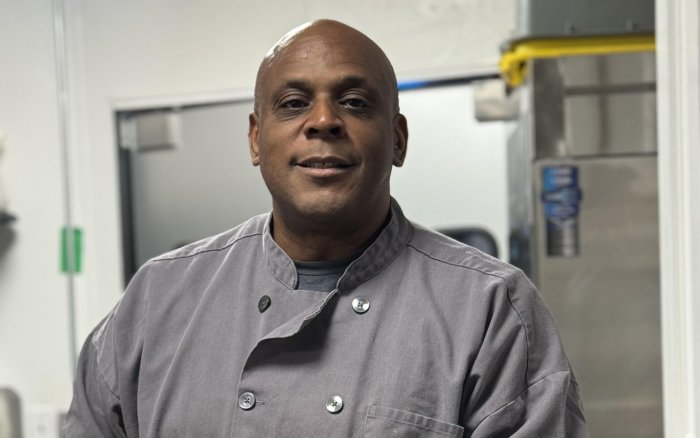By Bernadette Starzee
Most New Year’s resolutions center around health, with people vowing to eat healthier foods, lose weight, increase activity, or quit smoking once the Times Square Ball drops. But by the second week of February, 80 percent of New Year’s resolutions have gone by the wayside. We asked fitness, nutrition, and mental health experts for tips on how to make resolutions stick.
Set small, realistic goals and celebrate small wins
Rather than saying you want to lose 50 pounds or run a marathon, break your goals down into specific, short-term steps, said Marianne Barfield, a Long Island-based national coach for WW (formerly Weight Watchers), which guides customers to be more aware of their food choices and empowers them to choose healthier options.
“When your goal encompasses smaller steps with a shorter time frame to the reward, you’re more likely to stick to it,” she said. “You can bring all those steps together to create habits, and the powerful thing about habits is that once they’re established, they’re likely to continue even after motivation, interest and rewards have been reduced.”
Northport resident and former New York Daily News Golden Gloves Champion Alexander Garcia is a personal coach who founded AGT, which uses boxing-inspired training techniques to help people become the strongest version of themselves. Garcia also advises clients to take small steps and stick to them.
“Start by making a decision to train for 20 or 30 minutes a day, or every other day,” he said. “Or if you want to cut out sugar, commit to reducing portions or changing your sugar source to a healthier, less caloric option.”
And be sure to celebrate the small victories.
“If you didn’t feel like going to the gym, but you did, that’s a win,” Garcia said. “If you wanted to have a cookie, but you didn’t, that’s a win. Focus on the small wins and they start adding up. It’s not just about the destination: Enjoy the journey.”
Make a commitment and believe you can do it
Life shouldn’t be about restrictions or deprivation, according to Barfield, who advised, “Think of what can be added to your life by creating healthier habits.”
Once you establish your goals, “the biggest piece of advice I can give is to make a decision that you will get it done at all costs, even if it means you have to sacrifice the habits you currently have,” Garcia said. “It’s 100% possible; the biggest problem I see is a lack of commitment and failure to believe it can actually happen.”
That’s where coaches like Garcia come in — to help people get into and stay in the right mindset to hold themselves accountable.
“I tell my clients that staying on the couch and eating fast food may be things you feel like doing, but it’s not good for you,” he said. “Don’t stay in your comfort zone; chase what’s not in your comfort zone, but in a healthy and safe way. When you leave your comfort zone, that’s when growth happens.”
It’s important to not think of it as a diet, but as a lifestyle change; there’s no beginning and end.
“You have to make a decision every day to be a better you than you were yesterday, and that you’re going to leave your old habits behind to be the best self you can be,” he said. “Look at what you’re eating and think, ‘Is it helping me to get closer to where I want to go?’”
Set yourself up for success
If you’re starting on New Year’s Day, prepare in advance to get off to a good start, such as shopping for healthy food, having healthy food prepared and readily available, and getting items like potato chips and cookies out of your pantry. People who want to stop smoking can prepare for a couple of weeks in advance by adjusting some habits.
“For instance, if you always smoke in the car or when you are drinking coffee, try not smoking in the car or with coffee for two weeks to break those associations,” said Patricia Folan, R.N., director of the clinical program at the Northwell Health Center for Tobacco Control in Great Neck.
“It will make it easier on the day that you do quit, because you won’t have those triggers. Also, change your brand of cigarettes for the two weeks to something you don’t like as much, so the association won’t be as pleasant (don’t switch to menthol, though, which may be more difficult to quit).” The Center for Tobacco Control provides medications including nicotine patches, gum, and lozenges, which control withdrawal symptoms while people are in the process of quitting.
Be patient and forgiving of yourself
It’s important to stay committed and to hold yourself accountable, but you must also be gentle with yourself when you slip up, said Lisa Langer, Ph.D., a clinical psychologist and consultant in meditation and mindfulness at the Katz Institute for Women’s Health/Center for Wellness and Integrative Medicine in Roslyn and author of the book Deeper into Mindfulness.
“It takes three weeks to change a habit and two to three months for it to become automatic,” Langer said. “Stay conscious of your goals, but be compassionate and patient with yourself when you fall. It’s so easy to get angry when we’re struggling to change a habit, but instead of throwing the baby out with the bath water, get back on it tomorrow without being so self-critical.”
Get support
Having the support of professionals and peers can help you stay on track. Organizations like WW and the Center for Tobacco Control provide evidence-based programs that include support groups to help people change bad habits and stay the course over time. In addition, Langer said, apps like MyPlate Calorie Counter by LiveStrong, MyFitnessPal, and WW, which allow people to log meals and exercise, “help you stay conscious of your goals and can help keep you on track.”
Sign up for Long Island Press’ email newsletters here. Sign up for home delivery of Long Island Press here. Sign up for discounts by becoming a Long Island Press community partner here.


































